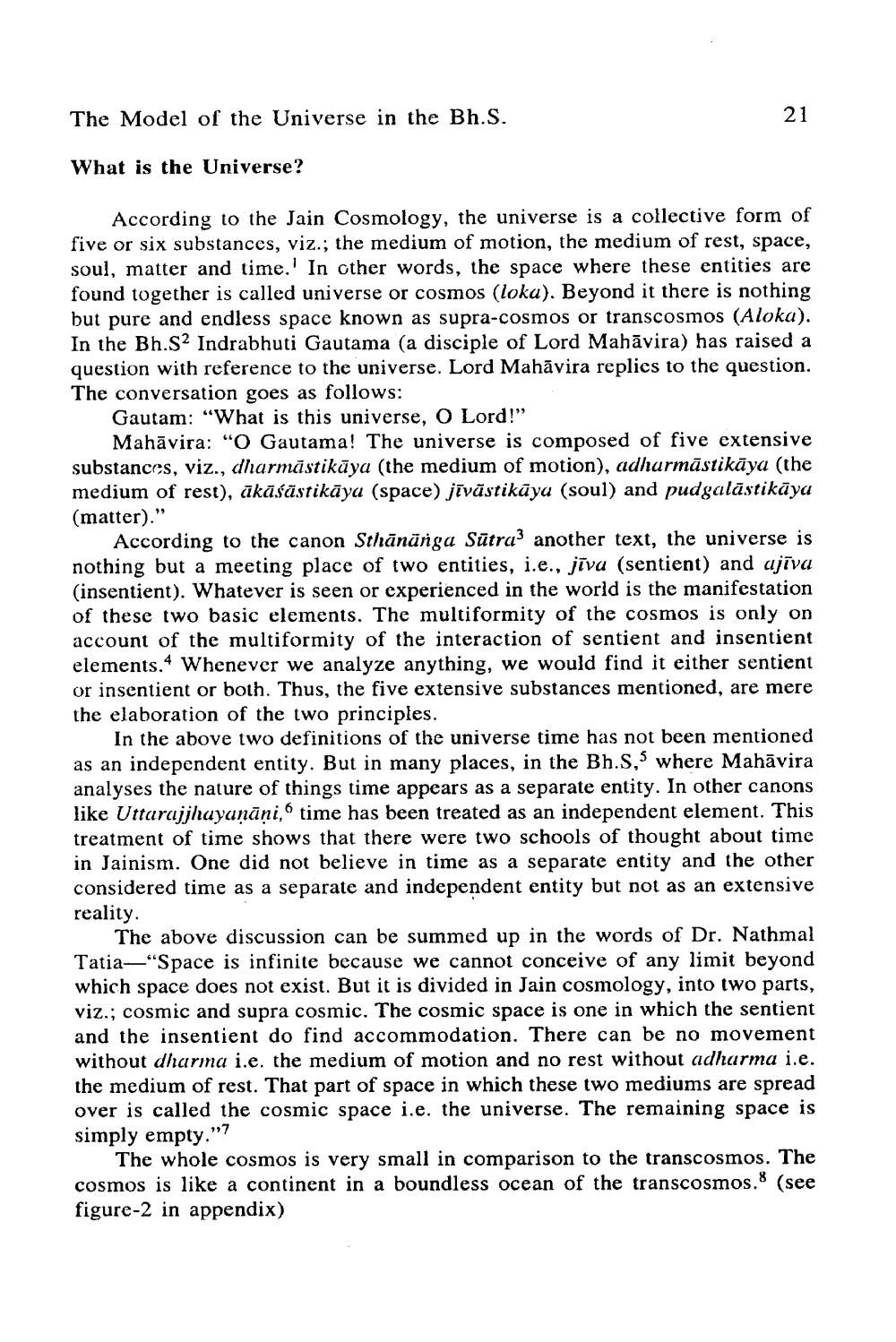________________
The Model of the Universe in the Bh.S.
21
What is the Universe?
According to the Jain Cosmology, the universe is a collective form of five or six substances, viz.; the medium of motion, the medium of rest, space, soul, matter and time. In cther words, the space where these entities are found together is called universe or cosmos (loka). Beyond it there is nothing but pure and endless space known as supra-cosmos or transcosmos (Aloka). In the Bh.S? Indrabhuti Gautama (a disciple of Lord Mahāvira) has raised a question with reference to the universe. Lord Mahāvira replies to the question. The conversation goes as follows:
Gautam: “What is this universe, O Lord!”
Mahāvira: "O Gautama! The universe is composed of five extensive substances, viz., dharmāstikāya (the medium of motion), adhurmāstikāya (the medium of rest), ākāśāstikāya (space) jīvāstikāya (soul) and pudgalāstikāya (matter)."
According to the canon Sthānanga Sūtra? another text, the universe is nothing but a meeting place of two entities, i.e., jīva (sentient) and ajīva (insentient). Whatever is seen or experienced in the world is the manifestation of these two basic elements. The multiformity of the cosmos is only on account of the multiformity of the interaction of sentient and insentient elements." Whenever we analyze anything, we would find it either sentient or insentient or both. Thus, the five extensive substances mentioned, are mere the elaboration of the two principles.
In the above two definitions of the universe time has not been mentioned as an independent entity. But in many places, in the Bh.S, where Mahāvira analyses the nature of things time appears as a separate entity. In other canons like Uttarajjhuyanāni, time has been treated as an independent element. This treatment of time shows that there were two schools of thought about time in Jainism. One did not believe in time as a separate entity and the other considered time as a separate and independent entity but not as an extensive reality.
The above discussion can be summed up in the words of Dr. Nathmal Tatia—“Space is infinite because we cannot conceive of any limit beyond which space does not exist. But it is divided in Jain cosmology, into two parts, viz.; cosmic and supra cosmic. The cosmic space is one in which the sentient and the insentient do find accommodation. There can be no movement without dharma i.e. the medium of motion and no rest without adharma i.e. the medium of rest. That part of space in which these two mediums are spread over is called the cosmic space i.e. the universe. The remaining space is simply empty."?
The whole cosmos is very small in comparison to the transcosmos. The cosmos is like a continent in a boundless ocean of the transcosmos.8 (see figure-2 in appendix)




